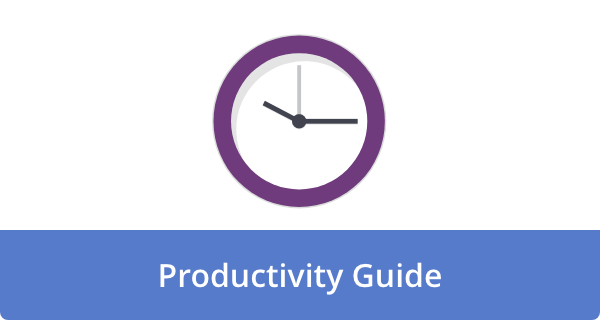

Are you tired of messy calendars and overlapping meetings wreaking havoc on productivity? Look no further, as we delve into strategic meeting scheduling, which will transform your calendar into an optimized powerhouse. In this article, we’ll explore the significance of well-planned meetings, the key principles of an orderly calendar, striking the sweet spot between team collaboration and focus time, and employing time management techniques.
The Importance of Strategic Meeting Scheduling
In today’s fast-paced work environment, strategic meeting scheduling has become essential to enhance productivity and maximize efficiency. Proper scheduling allows individuals to prioritize tasks, allocate ample time for preparation, and avoid overlapping meetings, which ultimately leads to better decision-making and smoother communication. For instance, a study by MIT Sloan found that companies with more organized meeting structures had a 13% higher market valuation and increased employee satisfaction.
To ensure an effective meeting arrangement, one can employ several techniques such as scheduling meetings during employees’ most productive hours, setting clear agendas, and keeping meetings within a reasonable time frame. Companies can use data-driven analysis to understand the peak productivity times of their staff, which can help to avoid scheduling meetings during periods of low productivity. Moreover, having a concise agenda helps all participants prepare adequately and stay focused during the discussion, resulting in more efficient decision-making processes.
The Basic Principles of an Optimized Calendar
An optimized calendar hinges on the basic principles that streamline productivity and encourage effective time management. One such rule is the implementation of time blocking, which involves dedicating specific blocks of time to a task or type of work and minimizing interruptions by silencing notifications or setting a “Do Not Disturb” status. By allocating time for specific tasks, you can dedicate complete focus to a task, enhancing efficiency and reducing the loss of time spent on constant task-switching.
Moreover, prioritizing high-impact tasks and including buffers-in-between meetings are essential practices for optimizing your calendar. By assigning priority levels to tasks, one can better allocate time and resources for tasks that have a higher impact on productivity. Consider employing the Eisenhower Matrix, which classifies tasks by urgency and importance, resulting in four quadrants to guide your focus. Buffer zones between meetings provide much-needed time to regroup, evaluate, and prepare for the subsequent engagement, increasing overall cognitive performance.
Balancing Collaboration and Focus Time
Effective time management requires balancing collaboration and focus time in your schedule. While collaboration is essential for brainstorming, sharing knowledge, and driving innovation, too much of it can become counterproductive as it distracts from individual tasks. In contrast, allocating dedicated focus time is necessary for completing tasks efficiently, problem-solving, and learning. A study by the Harvard Business Review finds that allocating 80% of work time to collaboration and 20% to focus time correlates strongly with increased job satisfaction, reduced stress, and better overall performance.
To optimize your calendar for productivity, follow the ‘two-hour meeting rule.’ Schedule meetings in two-hour increments throughout the day, leaving the rest of the time for focused work. This allows an individual to balance collaboration with team members without overwhelming their schedule and sacrificing focus time. One effective strategy to adopt is time-blocking – assign specific hours in the day for meetings and teamwork, while reserving the rest for undisturbed work.
Utilizing Time Management Techniques
Effectively utilizing time management techniques can significantly boost both productivity and overall job satisfaction during strategic meetings. One powerful method is the Pomodoro Technique, which involves breaking work into short, focused intervals (usually 25 minutes), followed by a brief break. This approach not only minimizes distractions but also fosters sustained concentration and eliminates burnout. Additionally, adopting the Eisenhower Matrix can help prioritize tasks based on their urgency and importance, enabling more efficient decision-making during meetings.
Embracing technology can further streamline the meeting scheduling process and promote optimal time management. For instance, utilizing scheduling software such as Doodle or Calendly can simplify the task of finding mutually available time slots for all attendees, preventing needless back-and-forth communication. Moreover, incorporating project management tools like Trello or Asana can create a centralized repository for agendas, meeting notes, and follow-up actions, ensuring that relevant information is easily accessible to all team members.
Implementing Technology for Enhanced Scheduling
Harnessing the power of technology can substantially streamline the scheduling process, enhancing productivity and reducing time-consuming manual tasks. For example, utilizing smart scheduling applications, such as Woven or Doodle, can simplify the process of finding mutually agreeable meeting times across multiple parties, as these apps consider participants’ time zones and calendar availability.
Transitioning to AI-driven virtual assistants, such as Clara or x.ai, further elevates the efficiency of setting up meetings, as they are specifically designed to manage scheduling and rescheduling requests, follow up on invitations, and provide reminders. Additionally, incorporating analytical tools gives insight into meeting patterns and empowers employees to make informed decisions about time usage and effectiveness, ultimately bolstering overall productivity. By embracing these technological advancements, companies can redefine their strategic meeting scheduling process, unlocking newfound potential in managing and optimizing time.
Measuring the Impact of Strategic Meeting Scheduling on Productivity
Measuring the impact of strategic meeting scheduling on productivity is essential in ensuring efficiency and effectiveness in business operations. One way to gauge this is by comparing the performance metrics, such as accomplishment of tasks by teams or individual employees, before and after the implementation of strategic scheduling. For example, a reduction in the time spent on meetings or an increase in the completion of key projects can indicate a positive effect on productivity.
To maximize the potential benefits of strategic meeting scheduling, it is crucial to continuously monitor and adjust the strategy based on the observed outcomes. For instance, if there are any shortcomings or inconsistencies in productivity levels, it might suggest a need for refining the scheduling process or addressing other underlying factors. By consistently evaluating the impact of strategic scheduling on productivity, businesses can fine-tune their approach and ultimately foster a more efficient and collaborative work environment.
Closing Thoughts
In conclusion, strategic meeting scheduling plays a pivotal role in boosting productivity and striking the perfect balance between collaboration and focus time. By adhering to the basic principles of an optimized calendar, employing time management techniques, and harnessing the power of technology for enhanced scheduling, individuals and organizations alike can significantly improve their efficiency. Monitoring the impact of strategic meeting scheduling on productivity underscores its significance and relevance in today’s fast-paced work environments. Ultimately, refining your meeting scheduling strategy catalyzes success, ensuring that you and your team thrive in achieving your goals.











Angela Ruth
My name is Angela Ruth. I aim to help you learn how Calendar can help you manage your time, boost your productivity, and spend your days working on things that matter, both personally and professionally. Here's to improving all your calendars and becoming the person you are destined to become!